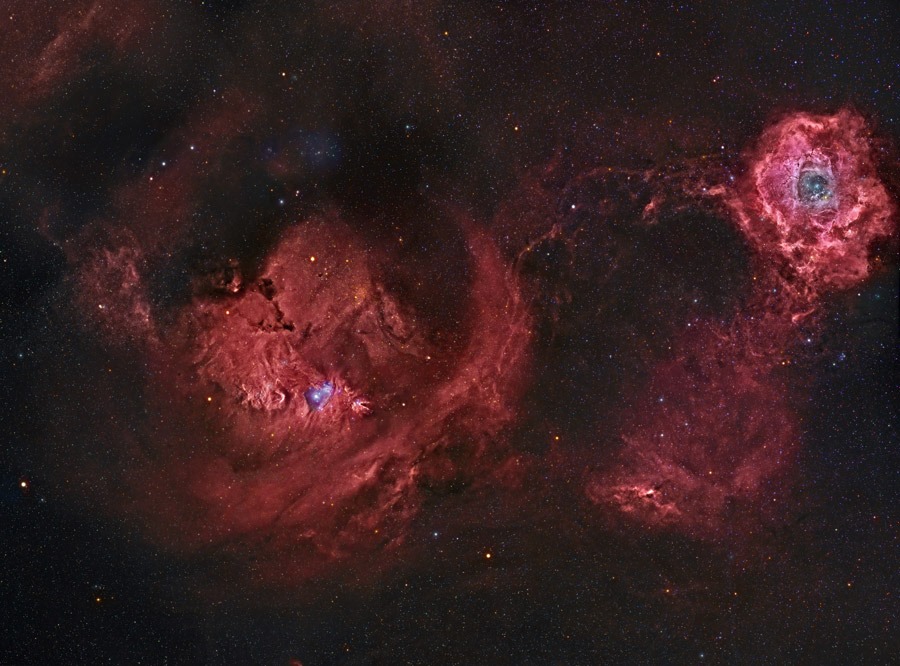

Who needs photoshop programs, when we have real images that are so incredible, they defy imagination? This particular one, taken by Rogelio Bernal Andreo from Deep Sky Colors, is located more than 5,000 light-years from Earth, tucked away in a corner of the Monoceros constellation.

In this wide-field image, we see several distinct celestial regions. First and foremost is the Rosette nebula, which got its name for its resemblance to the petals of a rose. Within the confines of the Rosette nebula we have have S Monocerotis (‘S Mons” for short — seen in the center to the left), which belongs to a cluster of high-mass blue-white stars, known as NGC 2244 (also known plainly as the Snowflake Cluster).

The Cone Nebula can be seen to the right of S Mons, the pointy structure. On the opposite side of S Mons is the Fox Fur nebula. Overall, this beautiful region has undergone cataclysmic changes over the course of the last few hundreds of millions of years. It will continue to be shaped by stellar winds, ultimately paving the way for the birth of many more stars.
See a larger image here.